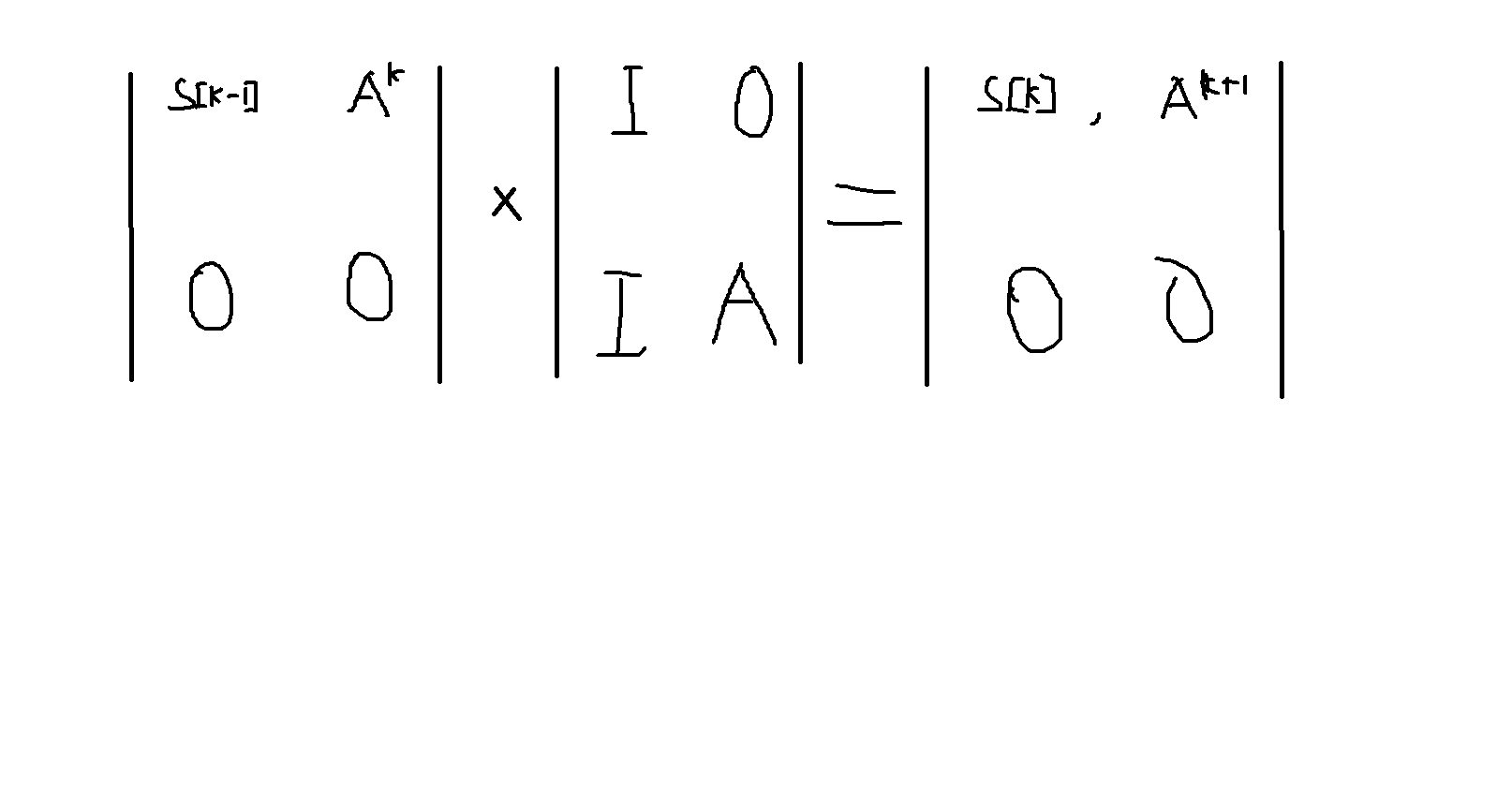Matrix Power Series
Time Limit: 3000MS Memory Limit: 131072K
Total Submissions: 19338 Accepted: 8161
Description
Given a n × n matrix A and a positive integer k, find the sum S = A + A2 + A3 + … + Ak.
Input
The input contains exactly one test case. The first line of input contains three positive integers n (n ≤ 30), k (k ≤ 109) and m (m < 104). Then follow n lines each containing n nonnegative integers below 32,768, giving A’s elements in row-major order.
Output
Output the elements of S modulo m in the same way as A is given.
Sample Input
2 2 4
0 1
1 1
Sample Output
1 2
2 3
可以找到递推关系 : s[k]=s[k-1]+A^k;
然后构造矩阵,利用矩阵快速幂
具体见代码
#include <iostream>
#include <string.h>
#include <algorithm>
#include <math.h>
#include <stdio.h>
#include <stdlib.h>
using namespace std;
int n,k;
int m;
struct Node
{
int a[65][65];
};
Node multiply(Node a,Node b)
{
Node c;
for(int i=1;i<=n;i++)
{
for(int j=1;j<=n;j++)
{
c.a[i][j]=0;
for(int k=1;k<=n;k++)
{
(c.a[i][j]+=(a.a[i][k]*b.a[k][j])%m)%=m;
}
}
}
return c;
}
Node quick(Node a,int x)
{
Node c;
for(int i=1;i<=n;i++)
for(int j=1;j<=n;j++)
c.a[i][j]=(i==j?1:0);
for(x;x>0;x>>=1)
{
if(x&1)
c=multiply(c,a);
a=multiply(a,a);
}
return c;
}
int main()
{
while( scanf("%d%d%d",&n,&k,&m)!=EOF)
{
Node a;Node b;Node c;
memset(a.a,0,sizeof(a.a));
memset(b.a,0,sizeof(b.a));
for(int i=1;i<=n;i++)
for(int j=1;j<=n;j++)
{
scanf("%d",&a.a[i][j+n]);
b.a[i+n][j+n]=a.a[i][j+n];
}
for(int i=1;i<=n;i++)
{
b.a[i][i]=1;
b.a[i+n][i]=1;
}
n=n*2;
c=multiply(a,quick(b,k));
for(int i=1;i<=n/2;i++)
for(int j=1;j<=n/2;j++)
if(j==n/2)printf("%d\n",c.a[i][j]);
else printf("%d ",c.a[i][j]);
}
return 0;
}

























 1353
1353

 被折叠的 条评论
为什么被折叠?
被折叠的 条评论
为什么被折叠?








